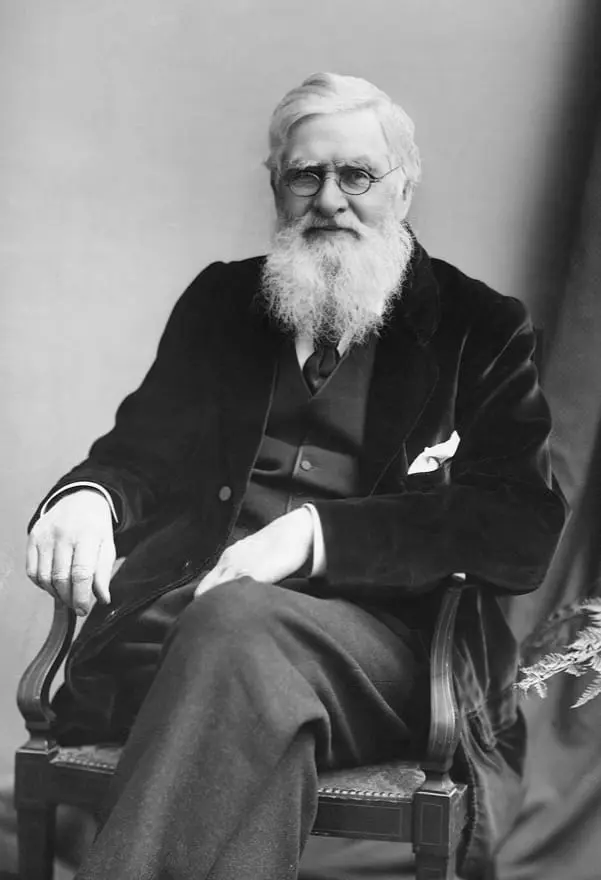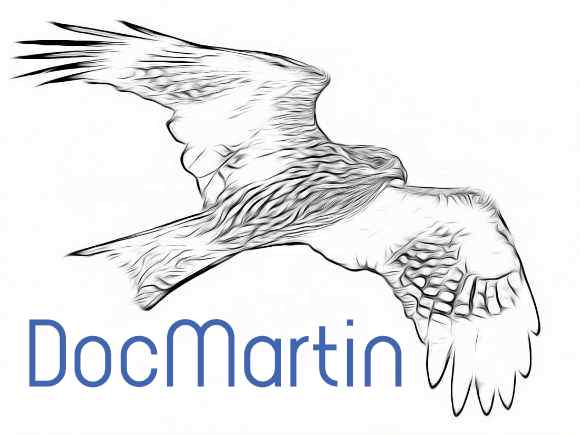Recently came news of a study finding that the distribution and evolution of Galapagos wildlife have been affected by varying sea levels, with land animals able to spread between islands that were linked as sea level dropped during ice ages. This follows similar work on Galapagos lava lizards, and in island groups elsewhere.
“Bingo! Sea level is the critical factor in the Antilles,” Dr James Lazell, president of the Conservation Agency, replied to an email I sent asking for comments on the Galapagos paper. In 1972, Lazell had published a report on lizards of the Lesser Antilles, in the Caribbean Sea, including his discovery that there were stronger similarities between lizards on islands that were linked as sea levels fell by up to 100 metres, while isolated populations tended to have evolved into distinct species.
I first met Lazell some years ago, as he studied reptiles and amphibians in Hong Kong. Here, too, he found that sea level changes had been important: for instance, Romer’s tree frog surely inhabited a coastal plain during the last ice age, but as the sea inundated the plain it became stranded, surviving on just four Hong Kong islands. Lazell used a term to describe such knowledge: biogeography.
Biogeography and Alfred Russel Wallace

While details on sea level changes are relatively recent, biogeography dates back to the 18th and 19th centuries, and was given particular impetus by the man who arrived at the theory of evolution at much the same time as Charles Darwin: Alfred Russel Wallace. And much as Darwin was influenced by his findings on the Galapagos, Wallace drew on discoveries he made on tropical islands where sea level changes played vital roles in determining species distributions.
Though best known as co-discover of evolution who gained far less renown than Darwin, Wallace was an astonishing man: an explorer, self-taught naturalist, discoverer of new species, prolific – and outstanding – writer, opponent of eugenics, and believer in both women’s rights and spiritualism. He countered ideas there might be life on Mars, took on a challenge to show the earth is curved. It’s surprising, then, that historian Dr John van Wyhe has lately downplayed some of his achievements – to the great annoyance of entomologist Dr George Beccaloni.
“This is of concern to myself and other Wallace scholars, as there is a danger that van Wyhe’s errors will end up being accepted as fact by others,” Beccaloni informed me by email. Beccaloni works in London’s Natural History Museum, and in 1999 set up the A.R. Wallace Memorial Fund. The fund’s patron is Bill Bailey, multi-faceted Briton who is primarily a comedian, but has trekked in Indonesian forests, and presented a two-part BBC documentary on Wallace, Bill Bailey’s Jungle Hero.
Wallace was born in Wales in 1823, and during his childhood surely seemed an unlikely future hero. Financial troubles led to him being withdrawn from grammar school, and he became an apprentice surveyor. In his early twenties, Wallace met entomologist Henry Bates, and began collecting insects. This plus reading books by travelling naturalists such as Darwin led Wallace to partner Bates in an expedition to Brazil, where they aimed to collect animal specimens that could be sold in Britain.
Travels in the Malay Archipelago
After three years, Wallace headed back home, nearly losing his life as the ship he was on caught fire. He wrote scientific papers, contacted naturalists including Darwin, and then embarked on his great exploration of the Malay Archipelago: currently Singapore, Malaysia and Indonesia.
He later related his travels and discoveries in a now classic book, The Malay Archipelago. This covers adventures in which he was invariably the sole European, making dangerous sea crossings, suffering occasional injuries, going to bed beneath shrunken human heads in a Borneo hut, and unwittingly sleeping soundly below a four-metre python in a house on Sulawesi.
Wallace was financing his travels by collecting specimens, and recounted killing several orang utans. Though he clinically told of how they might require a few shots to despatch, he also became very fond of a baby he found and kept as a pet. Though saddened when it died of fever, Wallace preserved its skin and skeleton, for shipping back to Britain.
As he journeyed, noting his specimen showing variations between individuals within species, and discovering a host of creatures such as a frog that could glide through the air, Wallace pondered ongoing debates on whether species were fixed – immutable – or could change over time.
While recovering from a bout of fever on islands east of Sulawesi, Wallace wrote a now famous letter to Darwin, together with a 20-page essay, “On the Tendency of Varieties to Depart Indefinitely From the Original Type”. In this, Wallace asserted that should physical conditions change, there would be a change towards a superior variety that, “would be in all respects better adapted to secure its safety, and to prolong its individual existence and that of the race.”
Evidently, Darwin was startled by the essay, which outlined ideas much as his own. It was soon published as part of a joint paper with Darwin, who was prompted to set down his ideas in his monumental work, On the Origin of Species.
Though Darwin’s name has become tied to evolution, Wallace did make another major discovery that’s linked to him. During a brief stay on Bali, he found birds much as on Java. Making a sea crossing of less than 20 miles to the east, to Lombok, he was surprised to encounter “a totally different set of species”, such as cockatoos. Beyond, in Timor, was a higher proportion of birds related to Australian forms. There were similar differences in creatures such as insects.
Wallace speculated on previous linkages between islands, such as whether Timor had been connected to Australia. Later, scientists appreciated that when sea level fell during ice ages, islands as far as Bali became part of the Asian mainland – allowing the spread of animals like tigers. But the deep Lombok Strait was always sea, and proved a formidable barrier. Today, biologists worldwide are familiar with the “Wallace Line” that runs through the straight, and passes north between Borneo and Sumatra.
To the west, Wallace noted the animals and even people belonged to the Indo-Malayan region; eastwards they were more Australian. There isn’t a hard and fast line, but islands including Lombok and Sulawesi are in a transitional zone that’s one of the most fascinating areas on earth, and bears a name that’s fitting tribute to this giant among naturalists: Wallacea.
Top People
Helicopter crews brave mighty winds and waves to rescue seamen during South China Sea typhoons
On the morning of 2 July 2022, as Hong Kong was lashed by gales and rainstorms…
James Reynolds typhoonhunter and volcano videographer
James Reynolds is a pioneer of travelling to film typhoons, and has added volcanoes to his…
Maasai safari guide Jackson Looseyia
Kenyan born Maasai safari guide, one of the presenters of the BBC’s Big Cat Live series.
A Man for All Sequences Frederick Sanger
Frederick Sanger made pivotal contributions to studying the chemistry of life, primarily by finding how molecules…
Blue light at last wins Nobel for LED titans
Isamu Akasaki, Hiroshi Amano and Shuji Nakamura received a Nobel Prize for seminal roles in the…
The butterfly and the remarkable Professor Hofstadter
Hofstadter’s butterfly, a remarkable spectrum of electron energy levels, was first described in 1976 by Douglas…
James Hansen Godfather of Climate Change retires yet will be very busy
Instead of aiming for a leisurely life after work, Hansen plans to better focus his time…
Pan Wenshi: Scientist Who Fights for the Pandas
When Pan learned how close giant pandas were to extinction, he knew he had to help…
Jill Robinson helping bears
First Jill Robinson was shocked, then she set out to stop the suffering The Great Bear…
Jessie Yu – Hong Kong Single Parents Assoc founder
The best way to get ahead, says this tireless Hong Kong philanthropist, is to help yourself.…
Keeper of the Kings: Captive breeding Philippine Eagles
Domingo Tadena: Captive breeding Philippine eagles
Dr Yang Lihe helping former leprosy patients
Yang knew only too well that the suffering of leprosy patients doesn’t end when the disease…
Dinosaur hunter Dong Zhiming
Meet the world’s greatest dinosaur hunter.
Dramatic rescue by brave helicopter crew from roof of blazing Garley Building in Kowloon
A helicopter crew rescues people from the roof of a burning building in Kowloon.
Mountain Dog and rebuilding schools in China
Retired Hong Kong schoolmaster helped get many kids from poor families in China back into the…
Mother Ko’s fight for justice
The more lawmakers ignored her, the more determined she became to seek justice
SARS doctor and heroine Yannie Soo
A mysterious illness was striking the medical staff down one by one. How could they fight…
Allen Lien
In October 2002, boxes of clothes began arriving in Burkina Faso, a country in West Africa,…
Teacher Lin helps kids in Taiwan
From reading and her observations of people, she believed everyone had good in them. These kids…











